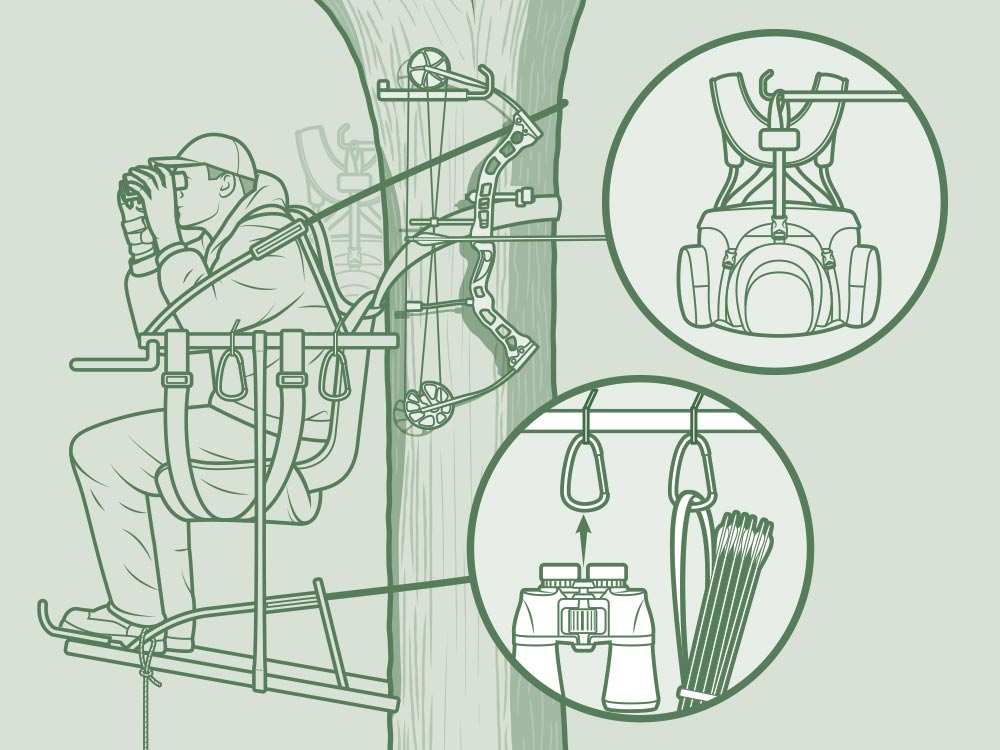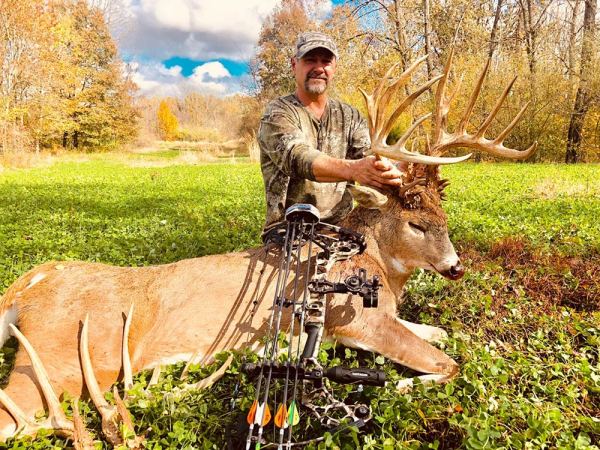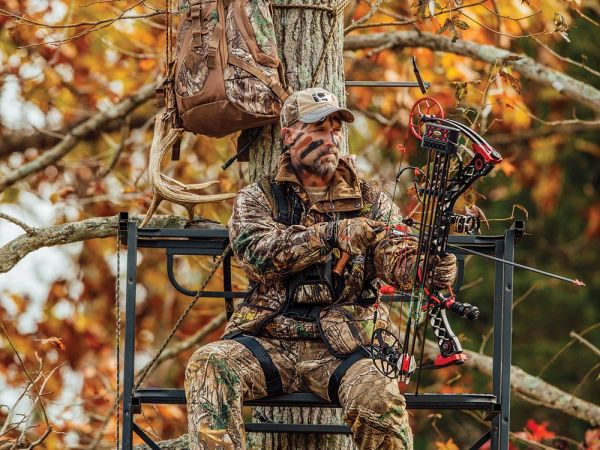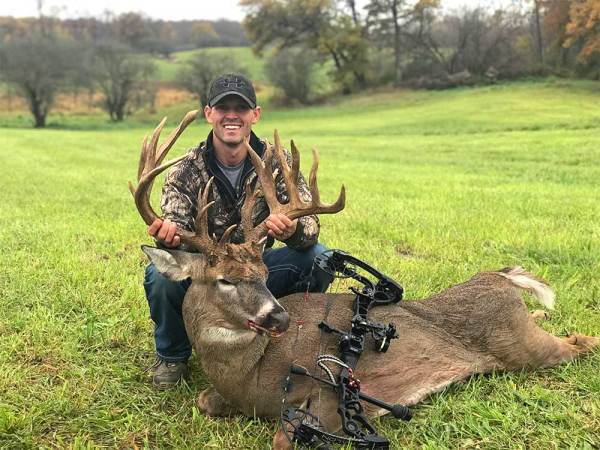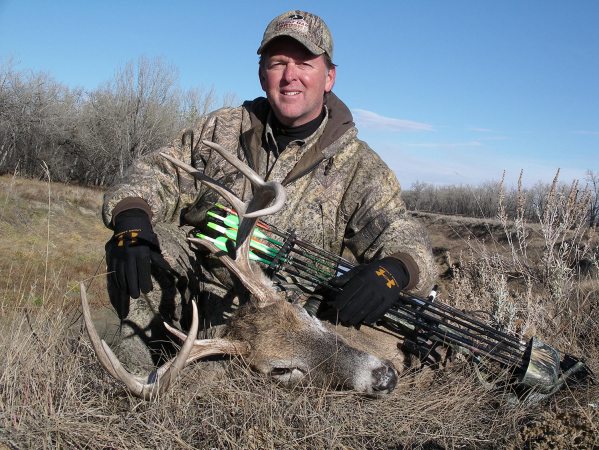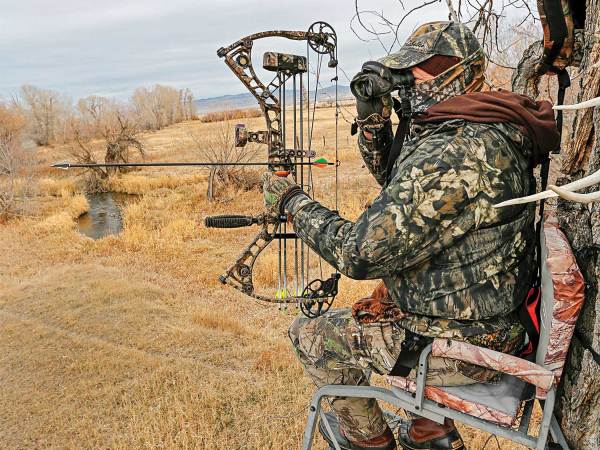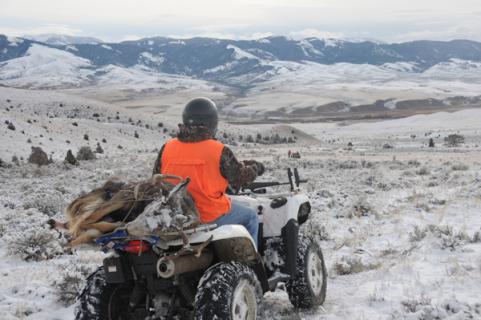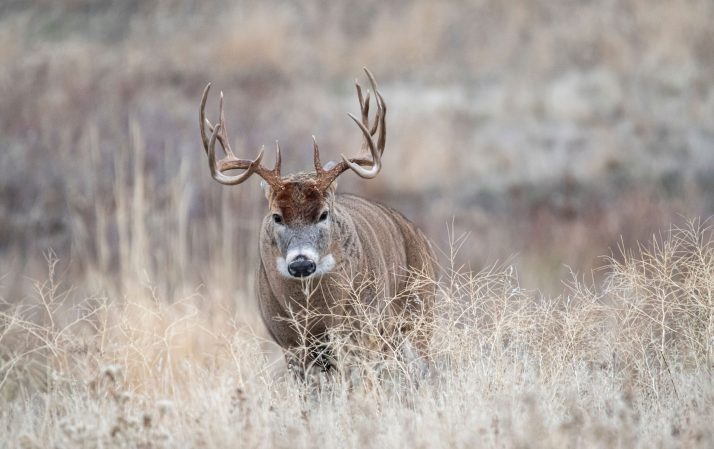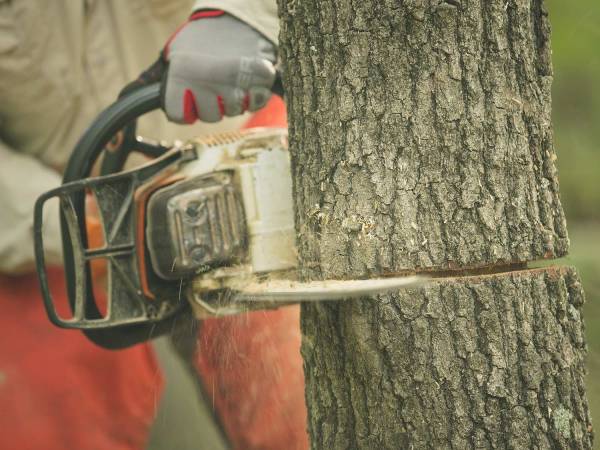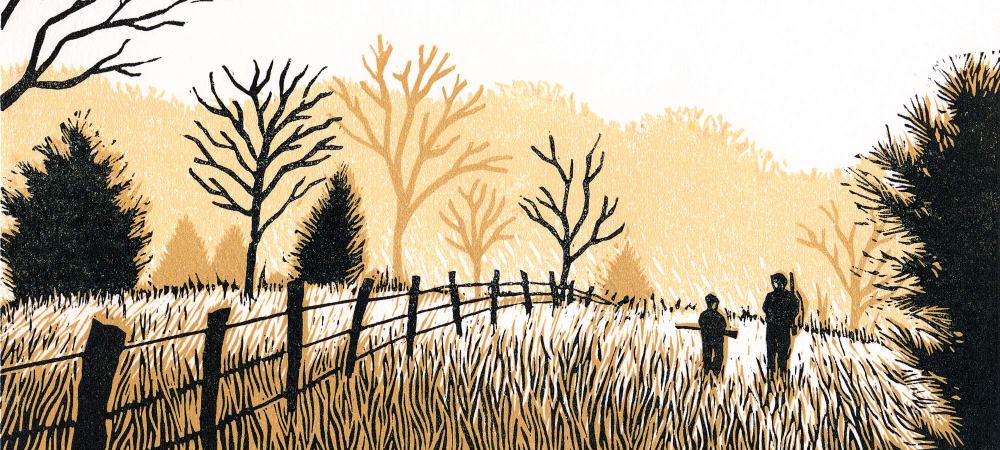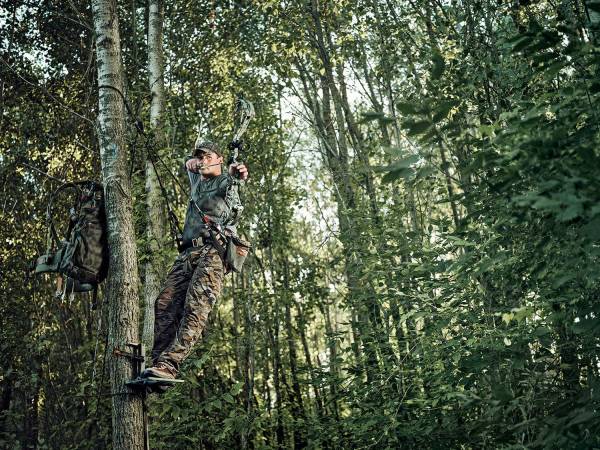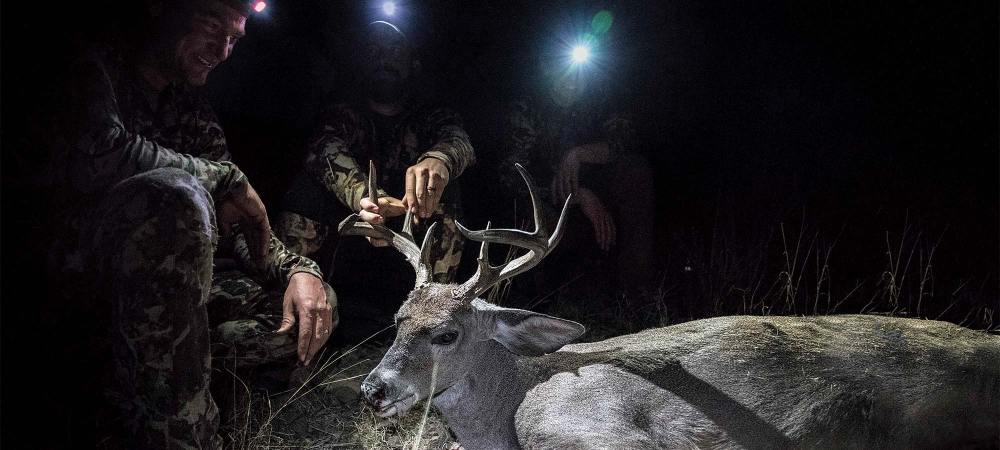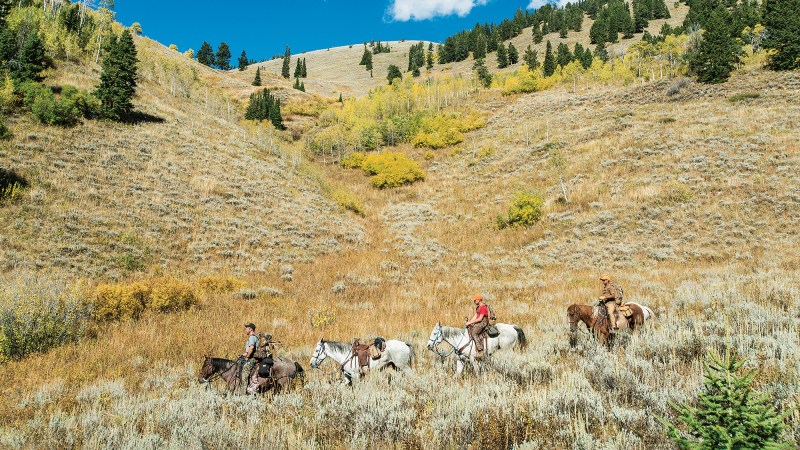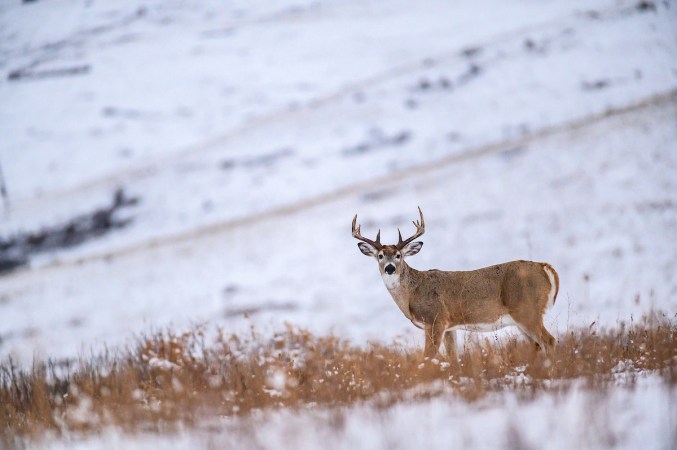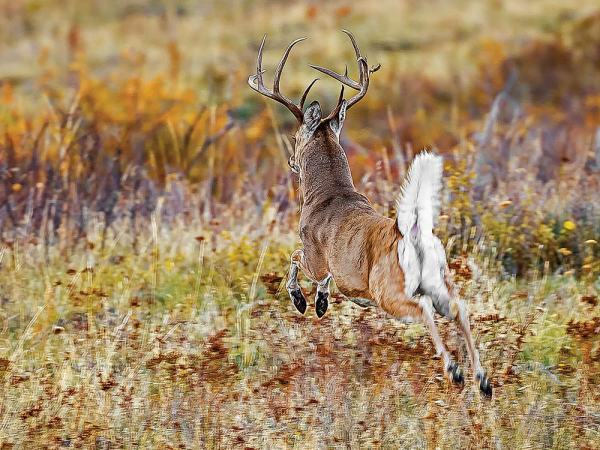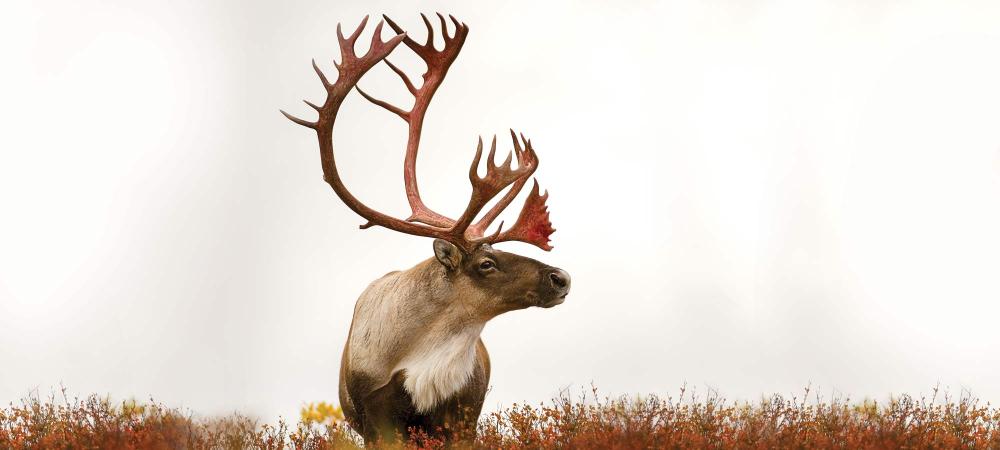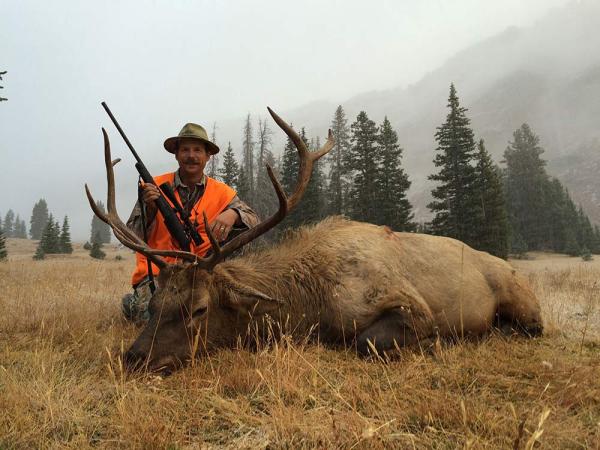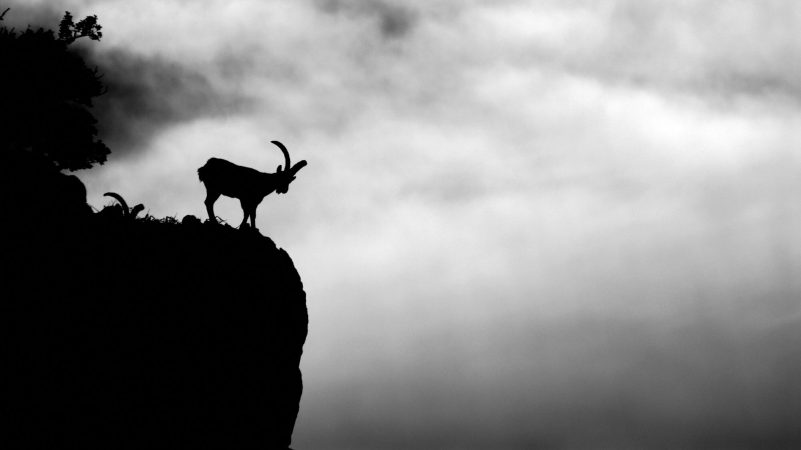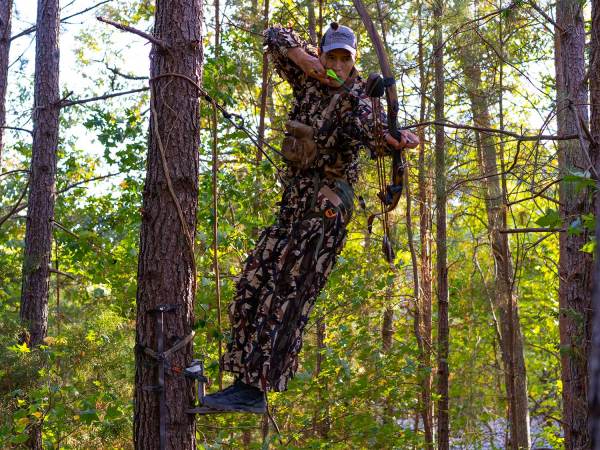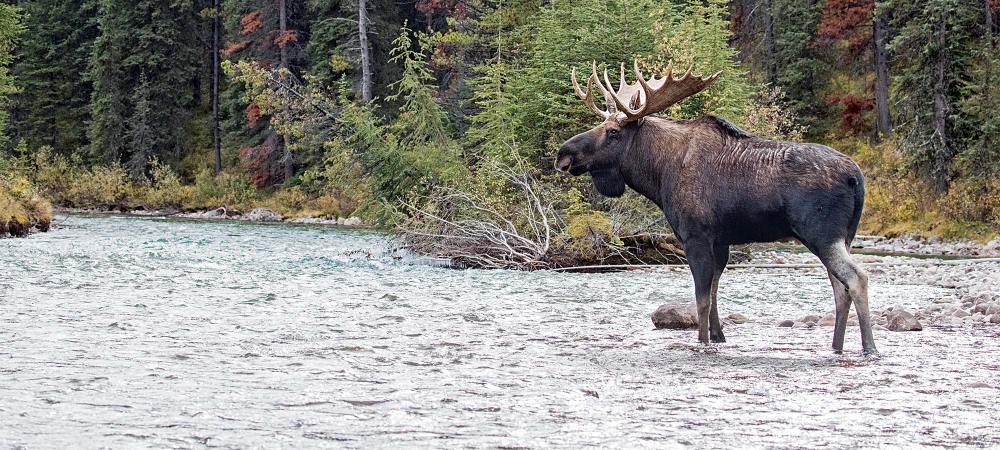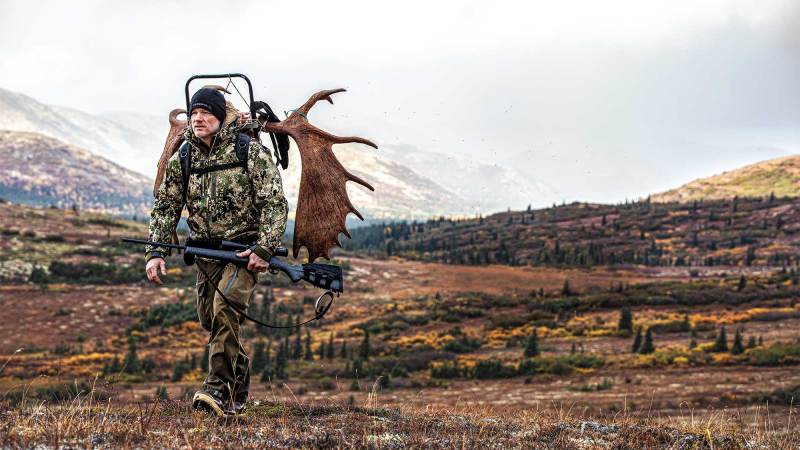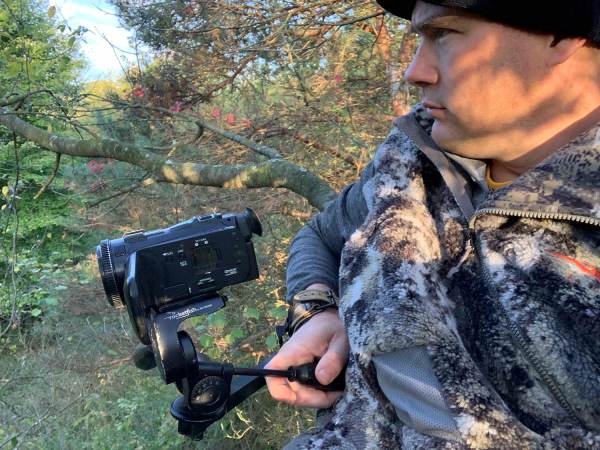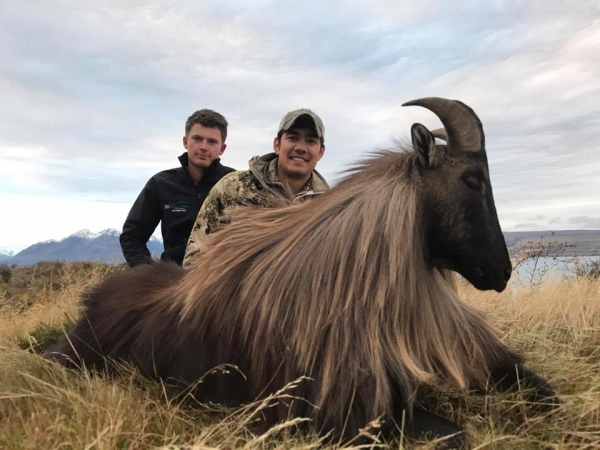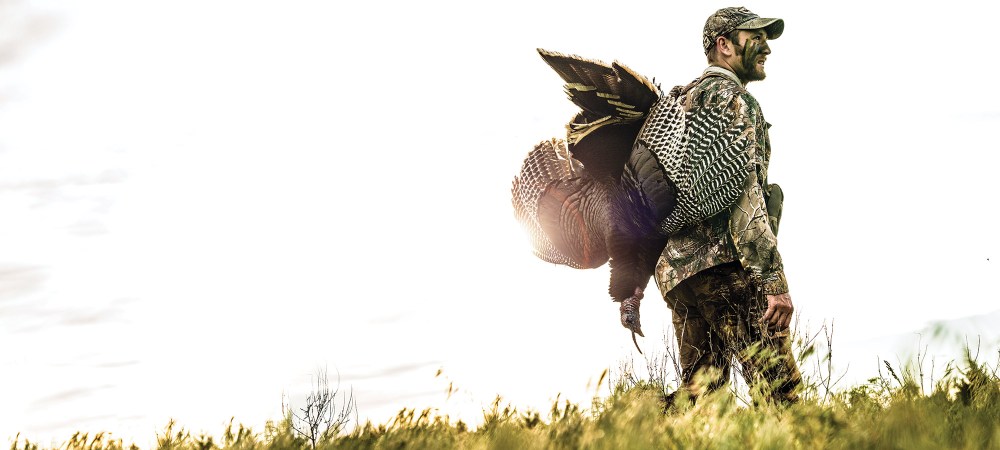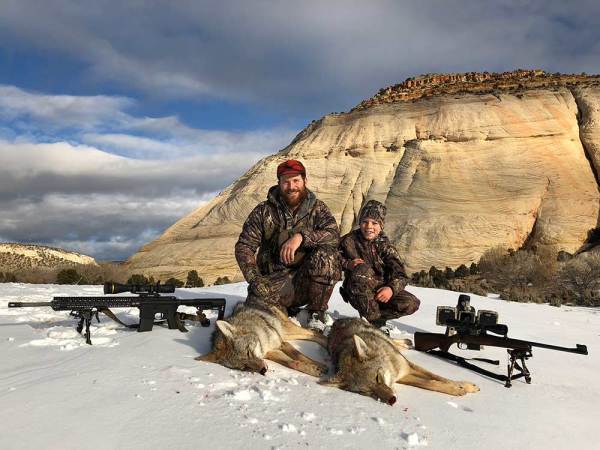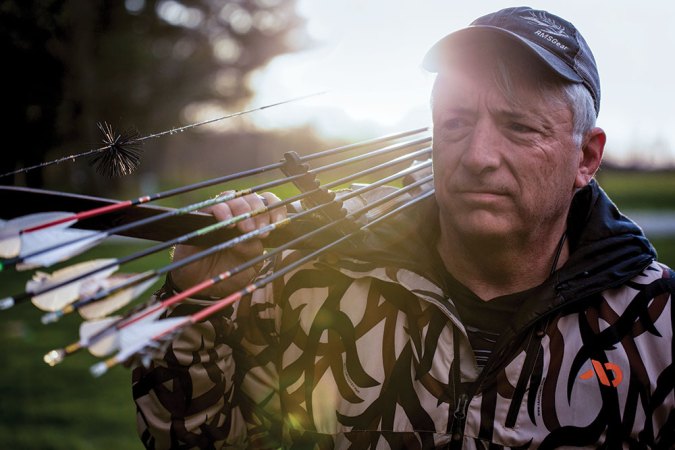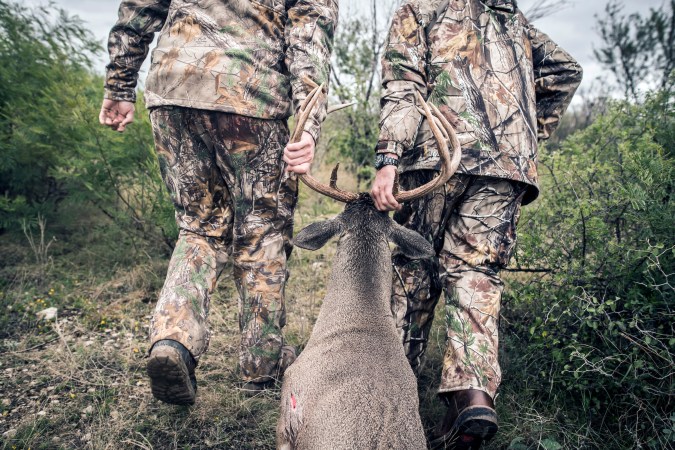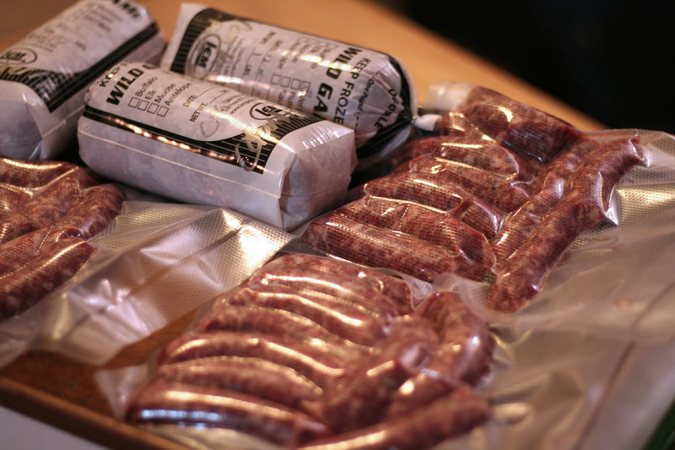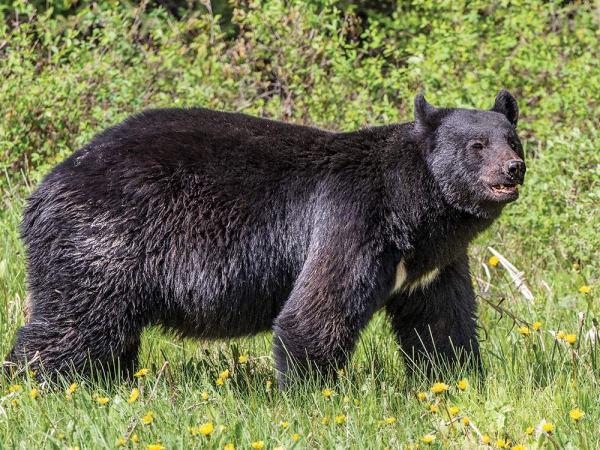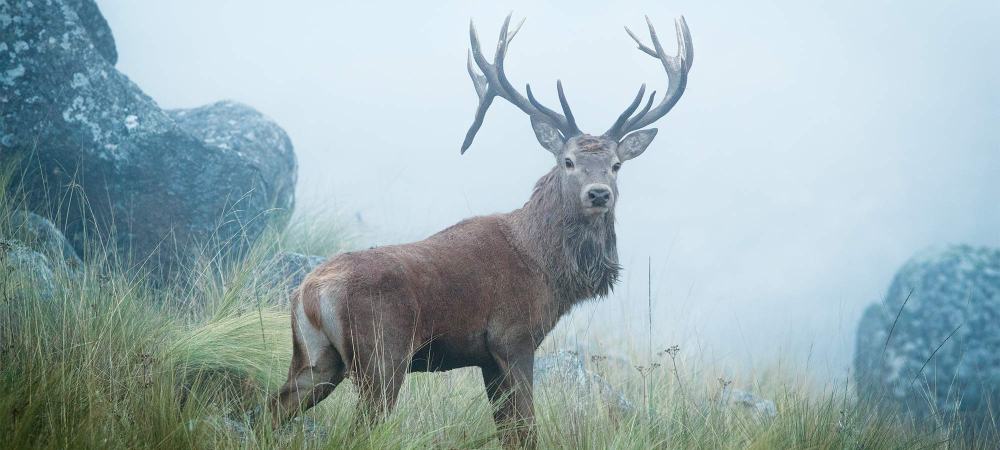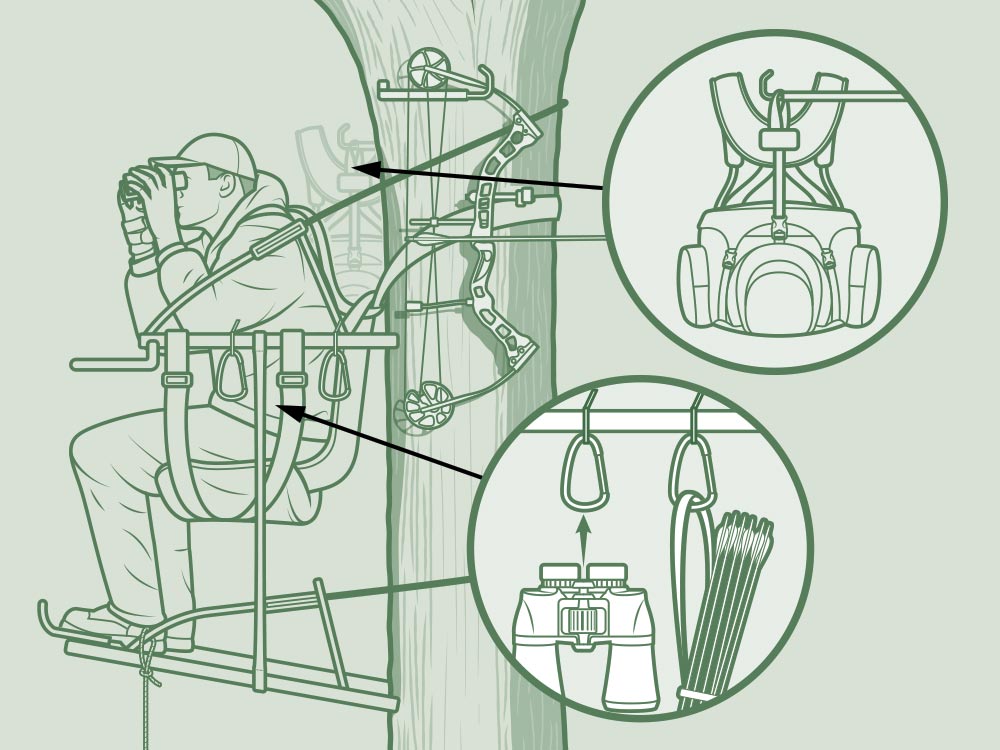
1. Pick a Trunk
You need a tall, straight tree with enough girth to support you. The standard advice is a shoulder-width trunk. Rough-barked trees—pignut, maple, pine, oak—provide the most secure bite. Avoid smooth, slick species like beech and sycamore.
2. Cover Up
I like the lower platform of my stand to be 18 feet high, minimum. I love to climb trees with leafy saplings growing near the base too, and with a big fork above where I’ll sit. This provides cover overhead and underneath.
3. Set the Stand
Trees are wider at the bottom than the top. I set the lower platform so it angles up at the base of the trunk but levels out up top. (It takes practice to get this right; err on the side of too tight.) The upper portion can be looser for easier climbing, then tightened when you’re settling in. Always strap the two pieces of the stand together.
4. Hang Out
A 13-inch Team Realtree EZ Hanger for my bow goes on my left (I’m right-handed), at standing shoulder height. Another hook for my pack goes on the right side, at shoulder height while seated.
5. Be Safe
I wear a full-body safety harness and put the belt around the tree before ever leaving the ground. I simply slide it up the trunk above me as I climb. Once I’m hunting, the belt stays secure just above my pack hanger, which keeps it at the ideal height for standing to shoot.
Read Next: How to Shoot from a Climbing Stand
6. Clip On
I zip-tie a couple of heavy D-rings to the armrests of my stand. These are perfect for hanging a quiver, grunt call, or rangefinder.
7. Pull Up
I tie two 25-foot lengths of paracord, with D-rings on the ends, to my stand before each climb. One is a pull-rope for my bow, and the other is for my pack.
